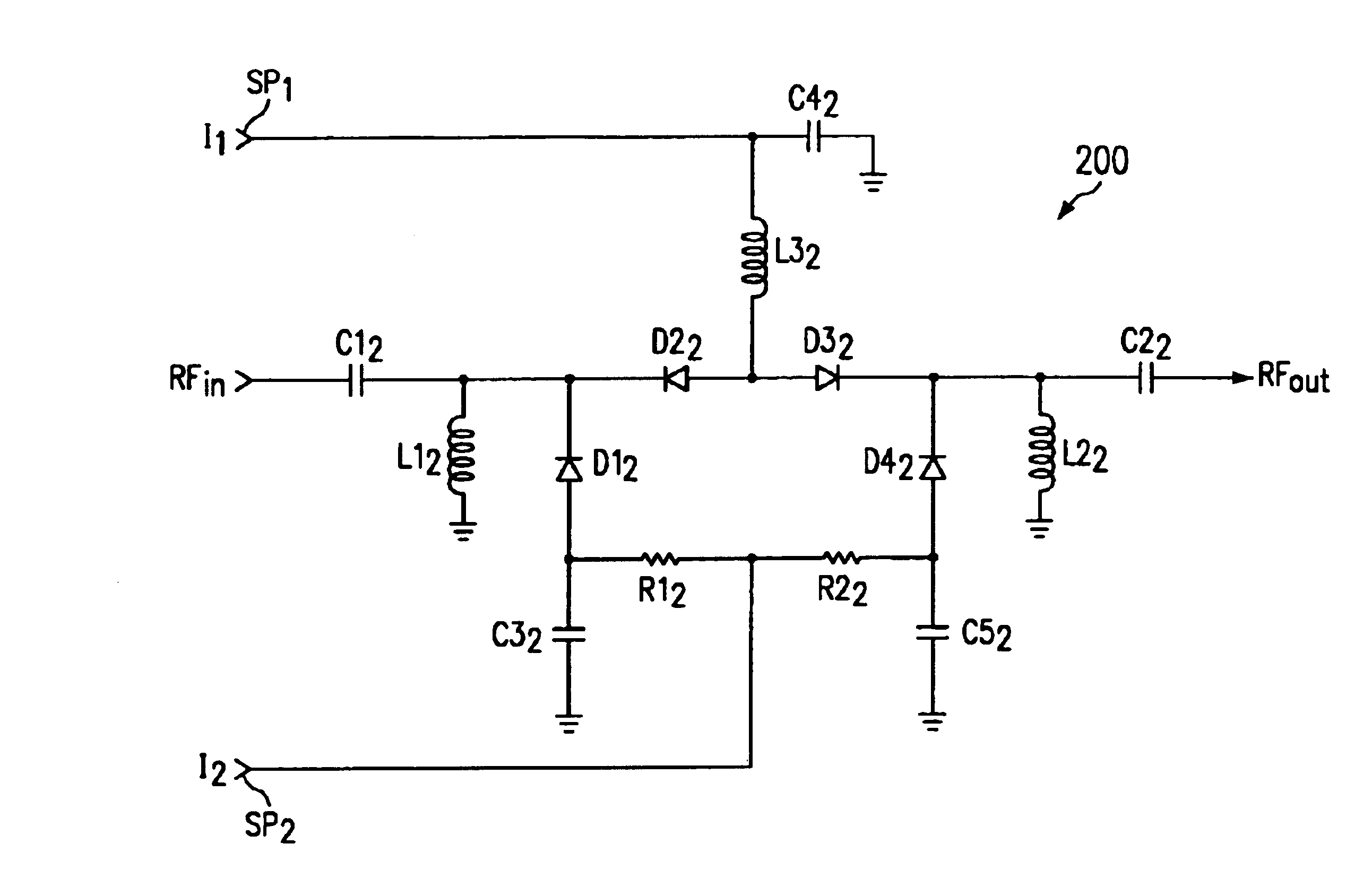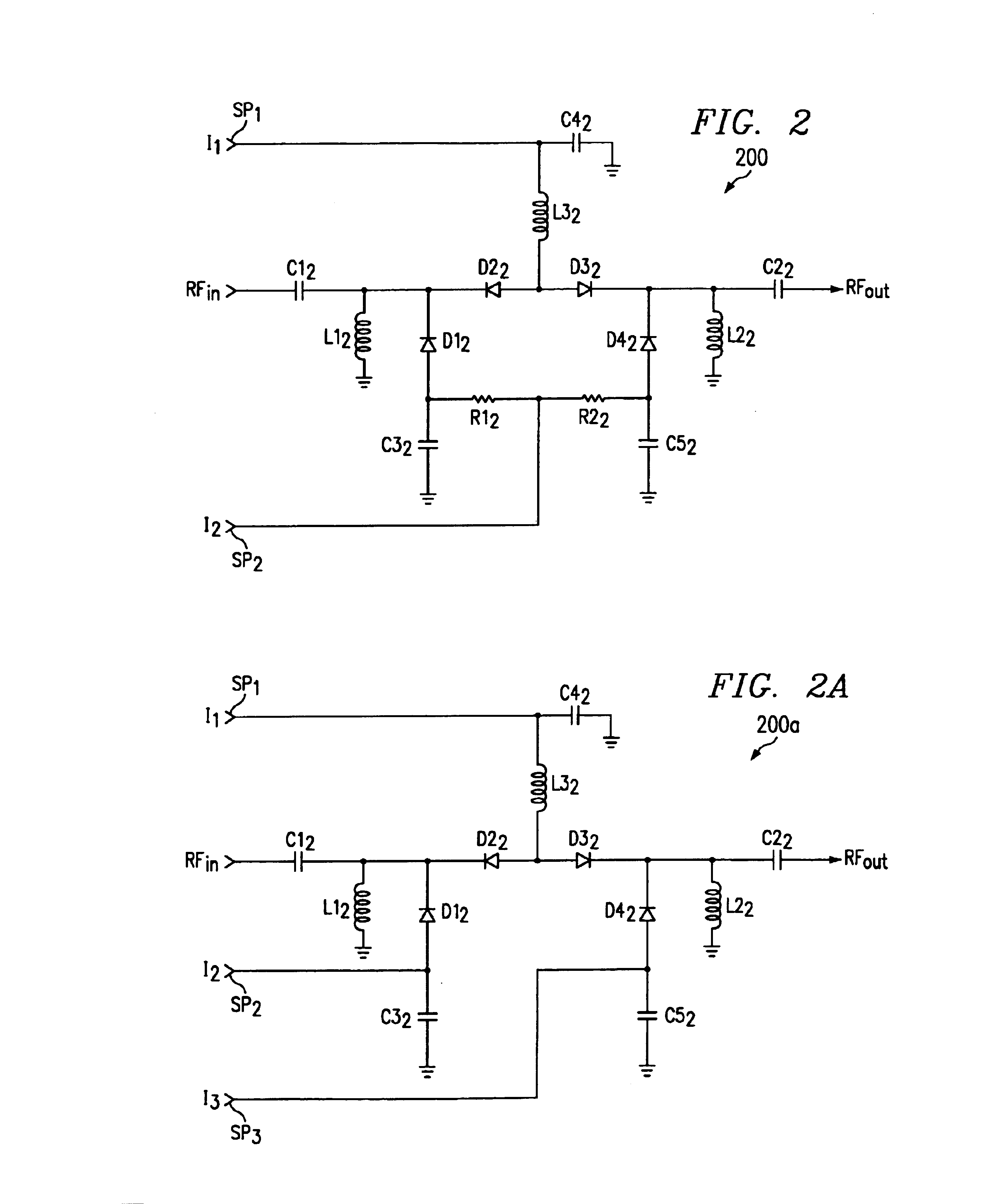Broadband PIN diode attenuator bias network
a pin diode attenuator and bias network technology, applied in the field of signal attenuators, can solve the problems of unpredictability and/or undesired operation of particular components, failure to maintain a proper impedance match, and greatly affect the system frequency response (power transfer) and noise figure, and achieve the effect of increasing the complexity of the attenuator control circuitry, reducing the cost of operation, and increasing the dynamic rang
- Summary
- Abstract
- Description
- Claims
- Application Information
AI Technical Summary
Benefits of technology
Problems solved by technology
Method used
Image
Examples
Embodiment Construction
[0020]A discussion of a typical prior art PIN diode attenuator circuit is helpful in understanding the present invention. Directing attention to FIG. 1, a typical prior art PIN diode attenuator circuit is shown as attenuator 100. PIN diodes exhibit a variable RF resistance that is inversely proportional to the DC current through the diode. The design of attenuator 100 requires arranging the PIN diodes to form a suitable RF attenuator network while providing DC bias current to each of the PIN diodes. Accordingly, attenuator 100 includes two PIN diodes arranged in a common cathode configuration (diodes D11 and D21) which are mirrored (diodes D31, and D41) to form a configuration commonly referred to as a π network.
[0021]The common cathode nodes of attenuator 100 are coupled to a DC ground (whether zero potential ground or some potential with respect thereto) through resistors (R31 for the common cathode node of D11 and D21 and R41 for the common cathode node of D31 and D41). Resistors...
PUM
 Login to View More
Login to View More Abstract
Description
Claims
Application Information
 Login to View More
Login to View More - R&D
- Intellectual Property
- Life Sciences
- Materials
- Tech Scout
- Unparalleled Data Quality
- Higher Quality Content
- 60% Fewer Hallucinations
Browse by: Latest US Patents, China's latest patents, Technical Efficacy Thesaurus, Application Domain, Technology Topic, Popular Technical Reports.
© 2025 PatSnap. All rights reserved.Legal|Privacy policy|Modern Slavery Act Transparency Statement|Sitemap|About US| Contact US: help@patsnap.com



